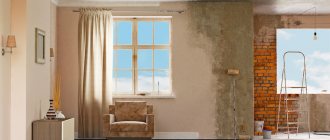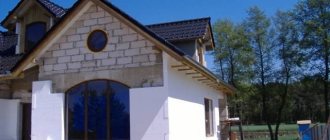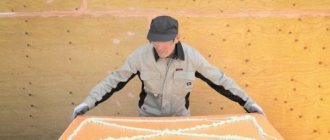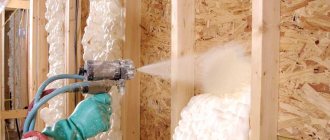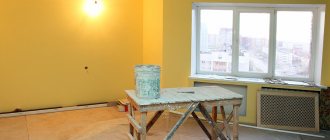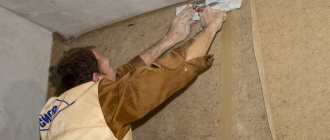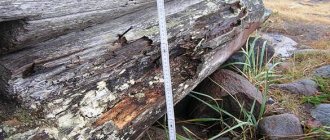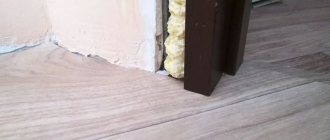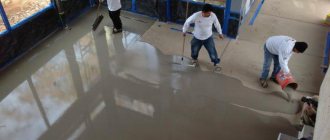Today, foam plastic is quite actively used as a building material for thermal insulation of buildings. It is also used for interior surfaces. This is what raises the question of how to glue the foam to the metal on the ceiling. Initially, its area of application was the transportation of equipment and furniture, where it acted as a seal. Today, foam plastic is installed on various surfaces, including metal. This choice is justified, because polystyrene foam is durable, it can retain its shape for 25 years, as for external use; but if you install it indoors, it will last for half a century. However, ultraviolet radiation and exposure to moisture can shorten the service life of the material. These factors shorten the life of almost any building material.
Expanded polystyrene is completely resistant to fungus and mold, so it can be used even in a damp environment, such as in basements. Insulation granules almost do not absorb water, but foam plastic sometimes attracts rodents, where they make burrows. Polystyrene foam does not support combustion, it is many times safer than wood. In order for it not to catch fire, the temperature must be twice as high as in the case of wood. When burning, it releases less heat. The material is completely safe for the environment and human health.
However, this thermal insulation has disadvantages, they are expressed in low strength, because the material breaks easily even with a slight impact. For this reason, its surface after installation needs mechanical protection; for this, various mixtures are applied to the base that protect against ultraviolet radiation. Having familiarized yourself with all these features, you can begin gluing the insulation to the metal surface, but it is also important to choose the right composition that will be the most effective.
Preparing tools
If you are concerned about the question of what kind of glue to glue foam to metal, then you can first start choosing the composition. Depending on which one you choose, you may need:
If you prefer a dry mixture, you will need a drill with a mixer attachment. To apply this glue, you can use a spatula in the form of a comb, but you will need a small spatula as a handy tool for work; with its help you can remove excess glue.
Technical characteristics of penoplex material
Let's consider what useful qualities this extraordinary product has. Here are some features of penoplex:
- resistance to chemicals;
- reduced thermal conductivity;
- poor moisture absorption ability;
- fire resistance provided by the fire retardant included in its composition;
- the product is absolutely not susceptible to aggressive biological factors.
It is obvious that due to its beneficial properties, this insulation material is exceptional.
Preparatory work before installation
If you are thinking about how to glue polystyrene foam to metal with polyurethane foam, then it is important to know that this material can be fixed to almost any metal. Among other things, you can use almost any glue or putty. However, you cannot purchase a composition whose ingredients contain gasoline, acetone or any other solvent. The slabs will collapse.
Another mistake that craftsmen often make is not using enough adhesive. Such compounds must be applied to the back side of the slabs; this must be done in 5 places or more. First, the mixture is applied in the corners, and then in the center. Before gluing foam plastic to metal, you need to remember that saving is inappropriate here. To do this, some apply the composition only in three points; this is incorrect and violates the technology.
Before gluing metal and foam plastic, the surface should be prepared; it should be cleaned of dust, old paint and varnish coatings, dirt and rust. You can use an oscillating or belt sander for this. After such cleaning, the base is degreased with any convenient means. Gluing is not such a quick process; sometimes it is necessary to ensure that the material is fixed until the glue hardens. At first, the thermal insulation may slide under its own weight, so it must be supported from below with a board or plywood.
Installation methods
There are several installation methods; the choice of one or another depends on the installation location. Here they are:
- using polyurethane foam;
- using disc dowels;
- using special glue.
The use of dowels is advisable when the facade is insulated, which will later be finished with facing material. In this case, the insulation will be the basis of the subsequent design.
As for polyurethane foam, it is used when laying the material on the floor, and the latter must be of the poured type. In other cases, it is faster and easier to lay penoplex on glue.
Note! It is recommended to use only the adhesive that is intended specifically for this type of work.
Choosing adhesive for foam plastic
If you are faced with the question of how you can glue foam to metal, then you should consider several methods, each of which involves certain material investments. The most budget-friendly option is the one that involves the use of PVA glue. If you have previously carried out repair work, then you may still have this composition. In this case, you do not have to purchase additional glue; you can use the leftovers. The secret to using PVA is to use burlap, which is soaked in the mixture, laid on metal, to which foam boards are then glued. In this case, it will be possible to achieve high adhesion, so that in the future it will be possible to apply a sufficiently thick layer of plaster.
How to prepare the surface
No matter what adhesive is used, the preparation process is always the same. If the metal is not properly processed, then no glue will provide reliable fastening of the foam.
Materials and tools for work:
- Metal brush . Used to clean the surface and remove rust and old paint residues. Instead of a hand tool, you can use a power tool - a drill or grinder with a special metal brush;
A special wire brush will help you quickly remove rust and paint from the metal surface.
- Paint remover . It is used if there are several layers of old paint on the surface, which does not adhere very well and may peel off later. The composition is easy to apply, but is toxic and requires compliance with safety measures;
Paint remover in aerosol packaging is very convenient to use
- Solvent. Used to degrease surfaces. Personally, I use the P-646 composition; it is inexpensive and well suited for preparing metal for further processing;
Solvent R-646 is used for cleaning and degreasing metal in preparation for insulation
- Composition “3 in 1” for metal surfaces . A special composition consisting of paint, primer and anti-corrosion treatment. After application, the surface will be reliably protected from rust for many years. If you have metal without pockets of corrosion, then you can use ordinary primer for metal, its price is much lower;
Special paints with anti-corrosion additives are the best preparation of metal for insulation
- Brush or roller . Used for applying paint. For large, flat areas, a roller is more suitable. For designs with many curves and angles, it is better to use a brush.
The brush should have thick bristles to ensure high-quality application of paint or primer to metal
Metal surface preparation:
The paint can be applied with a sprayer if available, but you can also use a brush.
Using polyurethane foam
If you are thinking about how to glue foam to metal, you can purchase polyurethane foam. It not only seals and insulates, but also has adhesive qualities; it can be used to glue material in places where there is no need to achieve super-strong adhesion. The foam is sold in convenient containers; in addition, not much of it is required. But you need to work quickly, since the material hardens almost instantly. If you are just faced with the need to glue foam plastic for the first time, then this option cannot be considered the most convenient.
Disc dowels are durable for a long time
The use of disc-shaped dowels is justified in the case of a large insulation area or uneven façade surfaces. For fastening to dowels you need: a hammer drill (impact drill), a drill of the appropriate diameter and length, and a hammer. Holes are drilled with a recess of 50-60 mm into the base. The holes are filled with polyurethane foam. Then the dowel is driven in with a hammer so that the dowel fungi do not protrude above the surface of the slab. It is best to use dowels in combination with metal screws to increase the reliability of the connection. Installing 5 dowels per slab is sufficient. Adjacent sheets are fastened with one dowel. It must be installed in the seam between the slabs.
Using polyurethane glue
When thinking about how to glue foam plastic to metal, the consumer quite often chooses polyurethane glue; it is the most suitable for carrying out this work. The mixture is available in convenient cylinders, but you will also need a mounting gun. If the work is single, then it is best to purchase a cheap tool, because it will not be used constantly.
Choosing a “installation” for penoplex
- prof (pistol) – characterized by a huge yield of active substance from 1 cylinder and the need to use a special device ( mounting gun). The latter is very convenient, because “gun” polyurethane foam for penoplex can be used in the most inaccessible places. Huge areas of the insulated surface require a corresponding amount of penoplex and polyurethane foam, which is typical for professional “installation”;
- semi-professional (household) - does not require additional devices, and has the smallest amount of working environment.
- By penetration temperature:
- summer - designed to work at temperatures from 5 to 35 degrees Celsius. In all respects, summer polyurethane foam is optimal for penoplex, since it does not contain toluene, which destroys extruded polystyrene foam;
- winter - allows you to do work at temperatures from 10 below zero to 35 degrees above zero;
- all-season (universal) - a similar option may contain toluene, as it should, penoplex and polyurethane foam of this type (if toluene is present) are incompatible.
Based on the advice of PENOPLEX SPb LLC, the installation of heat insulation boards should be done using at least some polymer sealant that does not contain toluene. The best method to firmly and perfectly fix penoplex is one-component polymer foam. But it may also be possible to use other fasteners for polystyrene foam to the wall.
Tips for using liquid nails
“How to glue foam to metal?” - This is a question that home craftsmen often ask. Experts advise them to use liquid nails; with their help, they can achieve high speed of work. The composition will almost instantly fix metal and plates, but the adhesion strength will be slightly less than in the case of a polyurethane mixture. You can combine materials; for this it is recommended to purchase liquid nails and polyurethane glue. The latter allows you to achieve strong adhesion, while liquid nails guarantee speed of work. In this case, you can refuse to use supports.
What type of foam should be used for penoplex?
It is difficult to imagine modern construction without the use of polyurethane foam, which is used as an excellent insulating material that fills cracks and has adhesive, moisture-proof and dielectric properties. It is needed when installing windows and doors, where its ability to glue and increase in volume allows you to firmly fix the installed structure. You also need polyurethane foam for penoplex when performing a complex of works, including if soundproofing walls made of penoplex is being carried out. Polymer sealant in aerosol cans has already become a necessary element in most construction and repair work, and its ease of use allows you to “blow out” foam boards, practically gluing them to vertical surfaces.
READ Installation of a fence on screw piles
Comments 90
Buy glue and don’t worry, it’s not cheap. It is glued in such a way that you cannot tear off the penoplex without damaging it. rather a zigzag or a stripe along the contour and a cross in the middle - it depends on how and where the penoplex .
I glued the gypsum panels with foam, they couldn’t be torn off, I glued the boards together, very tightly, soudal winter foam
Today I glued Eps on the base using macroflex foam glue. Better than TechnoNIKOL and others. Glues in 5 minutes. Epps first scrubbed with a metal brush
There is a special foam. Which will not expand much. But it will stick tightly. Sold in the same cylinders
This is how the garage was insulated for my father-in-law. It's been 3 years already
There is glue for foam plastic in such cans and the price is almost the same. And so I glued it to the concrete wall and attached it with umbrellas. It’s worth it.
The flight has been normal for about 10 years, we still use the leftovers when we need to put them under our knees to prevent them from freezing, well, in the repair area :)))
The entire garage is insulated with Penoplex and polystyrene foam. Everything is on polyurethane foam. Just not this one, but one that fits a pistol. And the top of the garage floor is plasterboard, on foam, and the garage floor is OSB, everything is on foam. I didn’t spray anything rough. It's holding on and you'll tear it off.
Sprinkle with water, then there is such a thing as foam cement. I did a ceiling in the garage and it's holding up well. The first row went a little to the side, I had to redo it, so I had to cut off the glue with a hacksaw so as not to break the sheet.
Gate in the garage. The penoplex was passed through with a card brush from the reverse side for better adhesion.
And what is the result? Do the doors now reflect warm air?
just not ordinary foam, but green glue. If it’s outside, then it’s worth taking some fungi.
Polyurethane foam and expanded polystyrene are not friends... There is POLYNOR spray insulation. Here it is, friends or adhesive foam for polystyrene foam. Here's a video
I glued it on the balcony. 2 years - normal flight.
Kleil, i.e. I tried to glue it . Did not work out
I bought special glue from Leroy. It sticks tightly. Also for a foam pistol. Dries very quickly.
Ordinary polystyrene foam in a damp garage has been living on the ceiling for 9 years and has not fallen off, the contour has foamed and the middle is pressed.
I insulated my entire house with polystyrene and foam adhesive. It stood open for two years until it was plastered. Everything will be OK.
I think the previous comments are enough. But let me remind you that for gluing you need not foam but glue (the same balloon, but it goes on a gun) this glue is used to glue walls from aerated blocks and holds them forever. If you have already purchased foam, you can glue it on it, just not right away, but as Dimka-26 wrote. And there is no need to sand anything there. But you can wet it.
I tried to wet it but it came off. It’s better to go through with a hacksaw, it won’t take long
Glue it calmly. I applied foam three years ago and feel great. It takes a long time to use liquid glue and the bricks on my walls are not laid very evenly, so I had to first level the wall and then glue it . I solved two problems with foam. Although everyone told me that it would disappear after winter. I went to my neighbor and glued a brick to his wall with foam and said when it disappears, let him tell the whole street about it. The street is silent, the foam holds up, I'm happy
And if you glue it to a foam block wall inside the house. In winter, the wall will freeze from the outside. How will the foam behave? Or is there something else for this case? I’m also thinking about covering the inside of the extension with penoplex.
A strip is glued around the perimeter and in the middle. Condensation will form in the cavities, be absorbed into the foam block, and then freeze... the question is how long will the foam block last in this mode.
And if you glue it to a foam block wall inside the house. In winter, the wall will freeze from the outside. How will the foam behave? Or is there something else for this case? I’m also thinking about covering the inside of the extension with penoplex.
Glue them on the outside! You don't need it inside. Outside with penoplex, inside with plasterboard. 2 years and everything is fine
And if you glue it to a foam block wall inside the house. In winter, the wall will freeze from the outside. How will the foam behave? Or is there something else for this case? I’m also thinking about covering the inside of the extension with penoplex.
Honestly, I don’t know how it will be from the inside. I don't have such experience.
Versatility is a good quality. In addition to it, foam for gluing foam has the following advantages.
It creates sealed air volumes under the surface of the expanded polystyrene sheet, increasing the level of thermal protection.
The foam is sold in metal cylinders with threaded connections installed on them.
With their help, the cylinder is connected to the gun.
These two elements ensure a quick start to work and the same change of the used cylinder.
It is necessary to use a special gun to ensure low mixture consumption.
One cylinder is enough to install 10.12 m2 of insulation.
It allows you to easily dose and evenly distribute the foam adhesive. To adjust the feed volume, a regulator is installed on the gun. It also ensures that the trigger is fixed in a certain position, preventing excess amounts of the composition from escaping.
The polyurethane foam composition ensures quick fixation of the slabs to the surface. After 2 hours, the next stage of work on fixing the insulation or finishing is allowed.
Its excess can be easily cut off with a construction knife after hardening 30 minutes after application.
An increased degree of adhesion to various materials increases the speed of insulation work. This is the best product for installing foam boards on metal surfaces and smooth concrete.
Its use does not require measures to protect the respiratory organs, eyesight, and skin of the working person. Fire danger is zero.
The foam does not expand after application. This prevents possible distortion of the sheets after installation.
READ How many bars of reinforcement 12 in a ton
During the application and subsequent operation, no negative aspects of its use were identified.
After work, remove the gun from the cylinder and remove any remaining mixture from its external and internal surfaces using a cleaner.
Polyurethane
Such adhesive compositions are produced in special metal cylinders and can only be used with the help of special equipment - a spray foam gun. When applied correctly, the material lies on the base in even zigzags, allowing it to achieve adhesion over the entire surface area.
Such compositions are characterized by rapid setting - just hold for half a minute, and the material will be firmly glued. But at the same time, the elasticity of the material remains for about 15 minutes.
The modern building materials market offers a variety of adhesive compositions for penoplex. We invite you to familiarize yourself with the most popular and high-quality products from different manufacturers.
Adhesive for installing foam in extreme temperatures
Quite often, craftsmen wonder how to glue foam to metal in winter. To do this, you can choose the WEBER THERM S100 composition, which can be used to work at temperatures ranging from -10 to +20 °C. The material is waterproof and can be used in any region of Russia. The mixture is a dark gray powder, and the average density of the solution is 1.4 kg/m3. Per kilogram of mixture you will need 0.26 liters of water. After mixing, the mixture must be used within one hour, the deformation shrinkage of the solution is 0.03%. If you are deciding what is the best way to glue foam to metal, then you can choose this particular composition, the adhesive strength of which is 1.4 MPa. The vapor permeability of the mixture is 12 mg/(h*m*Pa), while frost resistance, which is expressed in the number of cycles, is equivalent to 75.
Surface preparation before installing drywall on foam
Having decided to mount drywall on a wall or ceiling using foam, you need to familiarize yourself with the features of this type of fastening. This is a good method of installing sheets, because the surface of the wall may have differences of various levels. In case of very large deviations, special guides are used for gluing sheets.
It is important that the foam be of the highest quality: its characteristics should appear immediately after application.
Fixing drywall must be very reliable, because the characteristics of the foam affect its ability to push the material away from the wall. Of course, it is better to carry out preparatory preparation of the surface. The walls, ceiling and sheets need to be primed.
- Remove old trim from the wall.
- Cover the wall with primer.
- Attach a sheet of drywall to the wall and drill at 9 points.
- Drill holes for fastenings according to the marks.
After completing the preliminary work, you can begin attaching the gypsum board sheets. When installing it yourself, experts advise first installing one sheet and letting it dry. If the next day you are satisfied with the result, then you can continue working.
Types of adhesives
What composition is used to glue penoplex to the surface of a wall or ceiling? There are many options, but you need to choose the product carefully. This glue will hold not only the material itself, but also the entire insulating structure. If the quality of the glue is poor, it will not hold the insulation.
There are several types of adhesives depending on the composition:
- mineral;
- polyurethane;
- polymeric;
- waterproofing.
The first type is used to work with a dry surface, because at high humidity the mineral components immediately harden. It is better to carefully study the advice of the glue manufacturer before purchasing. This will allow you to choose the appropriate composition. It should not contain caustic, aggressive components, because penoplex is a capricious material, its structure is easy to destroy.
Self-tapping screws are cheap and cheerful
Fastening with self-tapping screws using a screwdriver is permissible when insulating a wooden wall over a previously installed sheathing. In this case, it is recommended to install a washer under the screw head to avoid surface destruction and increase the reliability of fastening.
The most widely used method of fastening is the use of bitumen (adhesive) compounds and disc dowels.
The resulting insulation layer is airtight, able to withstand large mechanical loads and has an increased insulation coefficient.
After installing the insulation, a reinforcing mesh is installed followed by cladding.
Now you don’t have to think: “How to glue penoplex? How to mount it correctly? The use of materials specifically designed for penoplex to the walls will allow you to avoid unnecessary waste of effort, money, time and get a durable layer of thermal insulation made by yourself.
Video on the topic:
Polyurethane-based compositions
For the installation of penoplex such products are often used. Most are sold in cylinders, so they are convenient and easy to use even for a beginner. The products are ready for use, they do not need to be mixed, and the consumption is economical. The most popular composition of the series is “Insta-Stik”. It is sold in 750 ml cylinders, the consumption when gluing is 12-15 sq. m, setting time - 20 minutes. Pull-off force – up to 400 kPa. The disadvantage is that it is not frost-resistant - you cannot glue penoplex to walls at temperatures below 0 degrees.
Another well-known glue is Titan Stiro-753. Its consumption is approximately the same (about 14 sq. m). The product has a high peeling force (600 kPa), and the setting time is even shorter (15 minutes). Penosil Fix&Go Montage is frost-resistant; it is used at -65...+130 degrees. Using the described means, it is easy to connect foam sheets together, stick them on wood, attach them to a brick wall, or to concrete.
Adhesive foam Penoplex Fastfix
This foam with adhesive properties is widely used for attaching thermal insulation made of extruded polystyrene foam to all kinds of substrates - ceramic tiles, concrete ceilings, floors and walls, plasterboard, aerated concrete, brick. Adhesive foam Penoplex Fastfix (“Penoplex Fastfix”) is produced in 750 ml cylinders, the product itself is light blue.
If necessary, the adhesive will provide adhesion to most building materials. Among them are plaster, stone, wood, expanded clay concrete blocks, metal, cork, cellulose. If the material had to be foiled, this product is incompatible with it. Foam is also not suitable for polyethylene, silicone, and Teflon. Here are the main characteristics of the material:
- drying – 10-12 minutes;
- complete hardening – 24 hours;
- possibility of cutting – within 30-40 minutes.
The product is used both for external work and for internal thermal insulation indoors; it is suitable for insulating loggias and balconies.
The principle of installing penoplex with glue
The process of gluing insulation to glue is simple, so this step is often carried out independently, this saves money. Installation should be done as follows:
- Surface cleaning.
- Prepare a schematic plan for installing the material.
- Prepare the adhesive mixture and dilute it with water according to the instructions.
- The solution is applied. It can be applied using 3 methods: stripes, spot distribution, continuous method, when the mixture is applied with a spatula over the entire slab.
- When the master has decided on the method and the solution is ready for work, it is applied to the slabs, then pressed to the surface, and they wait a little for the composition to set.
The joint areas should also be covered with a compound; it is more economical to choose polyurethane foam for this purpose than to use the same glue.
The joint areas should also be covered with the compound.
An adhesive solution for installing penoplex can create a strong connection that will last a long time, but it is better to additionally secure the slabs with dowels after gluing. Particular attention is paid to the selection of the product so that it meets the requirements necessary for specific operating conditions. We can say that foam glue is a more convenient product to apply, and their cost is low.
Mineral adhesives
Mineral-based adhesives contain cement, gypsum, and alabaster. They harden very quickly and must be applied immediately. The adhesives are mixed in small portions. Only cement compositions are usually used outside the room; products with gypsum components are suitable for interior work. The setting time is long, up to 1.5-4 hours, so it is possible to correct flaws.
The disadvantage of the compositions is that the base must first be well primed and wait until it dries completely, otherwise the connection will not be strong. Another disadvantage is the need for dilution; to obtain a high-quality homogeneous mixture, you need a construction mixer.
The most popular brands of mineral adhesives:
- Ceresit CT 83 - used directly for gluing penoplex, suitable for any substrate, pull-off force - 500 kPa, high frost resistance class.
- “Atlas Stopter K-20” – has an increased tearing force (600 kPa), is viable for 4 hours, consumption – 4.4 kg/sq.m. m, contains special reinforcing fibers.
Manufacturers and reviews
The modern building materials market offers a variety of adhesive compositions for penoplex. We invite you to familiarize yourself with the most popular and high-quality products from different manufacturers.
Tytan
The Polish company Selena quickly gained popularity in our market. And all thanks to the high quality of products and loyal pricing policy. Almost the entire range of products is presented in the form of adhesives and sealants, one of which is the Tytan universal adhesive.
, which is resistant to precipitation, temperature changes, and moisture, is most suitable for working with penoplex This glue does not require shrinkage and ensures a tight fit of the material to the surface.
Cerisit
The popular company Cerisit, known as one of the best manufacturers of building materials, offers a whole line for working with penoplex.
Experienced specialists select high-quality compounds.
- Cerisit ST84 is a special foam for penoplex used in facade cladding. Tolerates high and low temperatures well (from -10°C to +40°C). It is characterized by fast drying - in the warm season, the composition hardens within 2-3 hours. The work can be carried out using a mounting gun. This composition is loved by consumers for its harmonious ratio of affordable cost and excellent quality.
- Cerisit ST83 is a dry mixture for laying slabs. The drying time is much longer than the previous material - three whole days at above-zero temperatures. The composition is applied using a notched trowel. The approximate consumption of the mixture is 6 kg per m2. The only negative is that the material does not tolerate cold well, so if the temperature is below zero, work cannot be carried out.
- Cerisit CT85 is a reinforcing adhesive used for gluing and subsequent reinforcement of tile material. The product can only be used at positive temperatures – from +5 to +30°C. The mixture must be used within two hours after mixing. Approximate mixture consumption: 6 kg/m2 – when gluing; 5 kg/m2 – with reinforcement.
"Moment"
This material is universal for gluing foam boards, as well as for creating a protective reinforcing mesh. It is characterized by a high level of adhesion, elasticity, moisture resistance, and frost resistance. Does not require shrinkage and tolerates both low and high temperatures.
Master Termol
The cement-sand mixture for working with penoplex has many advantages.
- Firstly, it has good contact with cement and lime bases.
- Secondly, it adheres well to polystyrene foam bases. In addition, the material is highly plastic, frost-resistant and is considered an environmentally friendly product.
Most reviews from experts say that the quality of this material can be compared to more expensive products, although its pricing policy is much more loyal.
0 0 votes
Article rating
Polymer adhesives
Is it possible to fix penoplex with adhesives in small cans? Typically, polymer adhesives are sold in such containers; they are ready for use on any surface. Bonding by this method is practiced if it is necessary to attach penoplex to metal. It is better for beginners not to buy such compositions - they set instantly, and it will be impossible to correct defects.
A good product for slabs is Moment glue. It is resistant to humidity and temperature changes, and is produced in convenient packaging of 0.25-1 liters. Consumption is low, even a small pack is enough for 4-5 square meters. m. Another product is “Emphikol 225”, its technical characteristics are similar. After use, you should ventilate the room well for 2-3 days, but it is ideal to work with it in the air.
We use an inexpensive analogue
If there is a lack of funds, you can attach polystyrene foam to polyurethane foam. In order to reduce its consumption, install the insulation using a gun.
When choosing polyurethane foam for penoplex, polystyrene foam and other polystyrene foams, pay attention to its components. It should not contain toluene, alcohols, solvents, or other substances that lead to destruction of the structure.
The procedure for preparing the surface and applying the mixture to the slab does not change. Before gluing the foam, the wall must be moistened with water. Brick and concrete – generously, wooden – lightly.
There are some small peculiarities of fastening penoplex and polystyrene foam with polyurethane foam. They are due to the low speed of gaining the required density. When used in the same manner as adhesive foam, the slabs will need to be held in place for a long time (from 40 minutes to an hour). But this can be avoided.
After applying the composition, apply it to the surface for 3-5 seconds and shake the slab from side to side. Tear it off. Re-apply the mixture to it in a volume equal to half of the required amount. Wet the foam with water from a spray bottle.
Let the process of hardening and gaining density begin. The operating time will take from 2 to 4 minutes (during this time, prepare for the next installation). Then place the plate in place and press it firmly for 10 seconds. You can attach the next one.
This use case will significantly speed up the work process and eliminate the need to use supports and spacers.
Waterproofing compounds
This group of materials that will glue penoplex includes adhesives based on bitumen, acrylic, rubber, they are produced in the form of mastics. You can’t buy simple ones, they corrode the material, just like waterproofing agents with petroleum products. The best way to glue penoplex is Bitumast XPS. The mastic does not include solvents, sets in 2 days, and has a high peeling force of 500 kPa.
Acrylic adhesives can easily attach penoplex to wood, concrete, brick, connect penoplex to penoplex, and glue penofol to penoplex. They are suitable for interior and exterior work and have very low consumption. Bitumen mastics have the most pronounced waterproofing properties and are resistant to low temperatures.
Rules for use in case of fixing penoplex and blowing seams
The crucial moment is the choice of foam. The presence of toluene in it will lead to damage to the building material and the need to purchase a new batch - and this is a serious expense. Therefore, it is better to spend a little more time in the store to choose the right option.
Before starting work, perform some manipulations with the cylinder.
Heat it up, no matter what season - winter or summer.
To heat, take a small container and fill it with warm water. Do not use hot under any circumstances. The cylinder is placed in a container - a low saucepan or a small ladle, so that the warm liquid reaches no more than the middle. This heating is sufficient for 5-10 minutes.
Then the same amount of time is needed to thoroughly shake the contents of the container. In this case, it is guaranteed that all the material is used. Moreover, this procedure is relevant not only for professional cylinders, but also for ordinary household ones.
The next stage is a small check. More often, a special substance is used in the cylinder, which is squeezed out before starting work. If everything is fine, start using it.
The new cylinder gives greater efficiency at the beginning of work, it decreases as the material is consumed (pressure drops). Therefore, at the beginning of a new cylinder, the substance is consumed sparingly and in small doses.
If you take a break, rinse the tube through which the mixture is supplied, or the nose of the gun, to remove any remaining substance so that it does not harden. Otherwise, the nozzle will have to be cleaned, and this is a waste of time that is avoided.
Instructions for gluing penoplex
When you have chosen what to attach the material to, you can proceed directly to work. It is important to properly prepare the surface of the base; you can do this yourself. It should be cleaned of debris, dirt, and dried. If the manufacturer recommends, you must first prime the surface. Next, you should cut out the necessary pieces of the base material. How to cut penoplex? For this purpose, a stationery knife or jigsaw is used.
Installation technology
After drawing up an installation plan, you can begin gluing the product to the floor, walls or ceiling. Mineral wool is often used under penoplex.
There are several ways of gluing with glue:
The dot method is more often used, in which liquid glue is applied with a spatula 100-200 mm wide. Then you should wait a certain time and press the material to the surface. After complete drying, the joints are sealed with polyurethane foam or the same glue. The second option is much more expensive.
Glue consumption
All useful information for the user, including material consumption, is always indicated on the packaging. The usual figure is 3.5-5.5 kg/one standard layer of material (for mineral mixtures). Glue in cylinders is more economical and consumes less (from 10 sq. m per cylinder).
Puttying penoplex
After the glue has completely dried, you can additionally fix the penoplex with dowels, this is more reliable. Next, puttying with finishing materials is performed. The putty must be applied smoothly, layer by layer, and the putty must be smoothed evenly. After the first layer, a mesh of metal, plastic, and reinforcing is attached. The thickness of the first layer is up to 1 cm, the second – slightly less. 2-3 layers are performed as desired, with the third layer usually done by spraying and up to 5 mm thick.
External foam protection
For external protection, special glue is used. Which one is used in this case? A product with high adhesion to the surface is suitable; you can choose the brands “Ceresit”, “Master”, “Polymin”. Some professionals prefer to use “Gyprok”, a plasterboard-like insulation material.
Gluing stone and tiles to penoplex
After the final stage of work, you need to think about finishing. Most often it is recommended to glue ceramic tiles, porcelain stoneware or artificial stone. This is done with tile adhesive with frost-resistant qualities; with its help you can easily and quickly finish floors and walls. It is imperative to apply several layers of plaster, preferably Ceresit ST 85 with reinforcing mesh. It is recommended to make a cement screed on the floor indoors, and then create a decorative covering.
Recommendations for the use of Titan foam
The combined use of Titanium foam and penoplex is not particularly difficult, although for high-quality and reliable fixation of the insulation it is recommended:
- before treatment, clean the surface and lightly moisten it with water, which will increase the expansion volume and setting speed;
- Before use, shake the container;
- when spraying, hold the container upside down;
- seams must be filled from bottom to top;
- after hardening, the excess foam is cut off, and the place of application is covered with any protective materials, since the “installation” is destroyed under the influence of direct sunlight (plaster, silicone or acrylic sealants).
When performing work, you should follow safety and industrial hygiene rules, do not spray near an open fire, and do not heat the used aerosol can over a fire or pierce it. Additional costs for purchasing fixing devices will pay off in winter, allowing you to save on heating.
Questions and answers
There are a number of questions that concern users regarding the use of penoplex.
How to glue penoplex to penoplex?
There is no difference between how to glue two sections of penoplex and this material to other surfaces. But experienced builders claim that when fastening the slabs together, it is better to use a continuous method of applying glue, and you can do without a primer. In this case, dowel-nails are not required, and any glue listed above will do.
Is it possible to glue the material onto polyurethane foam?
You can glue penoplex to the foam, the adhesion will be strong. On the floor, this type of work is carried out on a self-leveling concrete screed. But gluing onto polyurethane foam is very expensive. It also tends to expand, so you will have to constantly press it until the process is completed.
Is it possible to glue penoplex to liquid nails?
You can use liquid nails, but it’s not very convenient. It should take up to 7 minutes before applying the slab in place, otherwise the glue will not set. In addition, the price of work will increase significantly.
Does air temperature matter?
This depends on the type of adhesive composition. Some lose their properties at low temperatures. Others allow work in the cold. All data must be clarified in the instructions.
Houses are different, and they need to be insulated in different ways.
The use of various technologies and materials in construction leads to the fact that it is impossible to give a universal answer to the question: what to consider when attaching penoplex to the walls of a house? Methods for fastening and preparing surfaces have been developed for different surfaces and operating conditions. You need to know this in order to control those who insulate the house. And even more so for those who insulate the house with their own hands, using their potential.
Houses can be made from stone and wood building materials. Already at the stage of surface preparation, peculiarities in the work begin to appear.
When preparing concrete and brick surfaces, you must:
- clean the walls from dirt, deposits, paint, fuels and lubricants, and then remove dust;
- treat the areas where the fungus is spreading with copper sulfate (antiseptics);
- remove efflorescence on brick;
- clean and seal cracks in the insulated wall;
- apply a deep penetration primer;
- smooth out unevenness with putty;
- apply a deep penetration primer after filling.
Preparing the tree is much easier. It is treated with impregnations that prevent wood rotting. Wall material such as oriented strand board or thermal wood may not be treated. Then a base of impregnated timber is installed, which ensures ventilation of the facade.
The choice of glue and what is better not to use
Before purchasing, you need to consider the following points:
- acceptable price;
- suitability for indoor or outdoor use;
- adhesion strength;
- consumption;
- harmlessness (for interior decoration).
Typically, any polyurethane or polymer adhesives are purchased for interior work. It is prohibited to use waterproofing products indoors; they can be harmful to health. Cement-based mineral mixtures are often used outside the house. For exterior work - balconies and plinths - acrylic mixtures are ideal.
Mounting features
Izolon (penofol) is covered with aluminum foil, which allows for the best possible retention of heat. Its adhesion to the surface of the insulation can be chemical or physical, that is, cross-linked. Izolon may have additional characteristics such as thickness or color. If you are looking for win-win insulation for your home, then this option will be the best choice. It is also perfect for insulating elements of air conditioning systems, pipelines, and production mechanisms. Foamed polyethylene is used for both external and internal work. The material has quite significant advantages.
Among them are:
- small thickness;
- ease of installation;
- environmental cleanliness.
Installation of insulation is possible without the use of special tools. Working with foamed polyethylene does not require additional protection of the respiratory tract and skin. The material is so light that the load-bearing capacity of the glue will not be critical.
Types of compositions
For the installation of Penoplex, the following adhesive compositions are used:
- Dry mixes;
- Polyurethane compounds in cylinders;
- Liquid Nails;
- Bitumen mastic.
Let's look at each option in detail.
Option 1: mineral-based mixtures
This type of composition has the following features:
| Illustration | Description |
| The composition is sold as a dry mixture . It must have the following properties: |
- Improved adhesion to mineral substrates;
- Increased elasticity of the finished solution;
- Moisture resistance and frost resistance;
- No shrinkage during drying.
A very good option is the Atlas Stopter K-20 composition, it is sold in 25 kg bags. The price of the package is about 1000 rubles. There are other dry mixes with similar characteristics. This type of product is most often used for outdoor work; it provides high quality fastening to concrete, brick and gas silicate blocks.
To work, you need to have a container and a drill or hammer drill with a mixer attachment on hand.
It is very important to maintain the correct ratio of components; if violated, the properties of the composition may decrease.
- Distribution of the adhesive composition in stripes along the edges and in the middle;
- Applying the solution in dots with increments of 30 cm in two rows with a distance of 5-10 cm from the edge;
- Continuous distribution of glue using a notched grater (as in the photo). This option provides the best quality of fastening, but is suitable for surfaces with minor unevenness.
The dowels must extend into the wall at least 40 mm; only in this case will they securely fix the Penoplex.
Option 2: polyurethane-based adhesives
This option appeared relatively recently, but has already gained immense popularity due to its convenience and high quality. The main features of this option are:
| Before use, the mixture is diluted with water . All proportions and a description of the cooking process will be indicated by the instructions on the package. |
| Glue is applied to Penoplex boards . There are several options for carrying out the work: |
| When insulating the floor, glue can be applied to the base . In this case, it is distributed with a toothed grater with a tooth size of 10 mm over the entire surface. |
| On the facade, the sheets are additionally secured with dowels . You must use at least 2 fasteners per sheet to ensure reliable installation. The dowel is placed in the hole, which is drilled after gluing the elements. |
| Illustration | Description |
| Sold in 750 ml bottles . It is very convenient and practical. To work, you will need a spray foam gun; with its help, the composition is consumed very economically and is easy to apply. |
The polyurethane composition perfectly glues Penoplex not only to mineral substrates, but also to metal, wood and other complex surfaces. It can be used to glue sheets together.
The cost of a cylinder is 300-400 rubles, one package is enough for 10 square meters.
After application, the mixture remains elastic for 10-15 minutes.
Before gluing Penoplex to a concrete wall, it is worth treating it with primer, this will improve the quality of fixation.
Instead of polyurethane glue, you can use polyurethane foam. It also holds the material well, but hardens much longer, so after applying the composition you need to leave the sheet for about 10 minutes for initial hardening.
Option 3: liquid nails
When choosing what to glue Penoplex with, one cannot help but mention liquid nails; this type of composition is excellent for such purposes and has the following features:
| The composition is applied to Penoplex sheets . This can be done either as shown in the photo, or apply glue around the perimeter and make several stripes in the middle. |
| The sheets are simply pressed to the surface and held for 20-30 seconds . Work can be carried out both inside and outside buildings. When insulating the facade, it is recommended to additionally fix the elements with dowels, but this is not necessary. |
| Illustration | Description |
| The composition is sold in tubes of 310 ml . When choosing an adhesive, you need to take into account the type of surface on which Penoplex will be attached and the location of the work. |
For external insulation, special weather-resistant types of glue are used. Standard options are used inside.
The cost of the package is approximately 200 rubles, it is enough for 3-4 square meters.
Due to the significant consumption, it is not worth using liquid nails on large objects. It's too expensive
Option 4: bitumen mastic
This type of composition has the following features:
- Sold ready-made in buckets . Used for waterproofing foundations and plinths. It is on these parts of the structure that Penoplex is glued using mastic;
Mastic acts both as glue and as surface waterproofing
- The composition is applied to the surface . The work is done with a spatula or brush. The mastic is distributed in a thick layer without gaps to cover the entire base without gaps;
The composition is applied to the surface in a thick layer
- The sheets are carefully pressed to the surface . You should start working from the corner, the elements are combined with grooves and pressed for a few seconds. You can cover the foundation with your own hands very quickly. There is no need to fix the elements with dowels; anyway, the lower part is covered with soil.
The foundation is covered with Penoplex while the mastic is still wet
How to use the solution correctly
To carry out the process of using the adhesive solution yourself correctly, you need to know the basic principles of working with it. Professionals highlight the following points of work:
- Dilution of the dry mixture is done strictly according to the manufacturer's instructions;
- The slabs should be mounted as close to each other as possible to reduce heat loss; the seam areas after installation are covered with sealants or other suitable means;
- When working, monitor temperature indicators; cold often leads to the loss of some of the properties of the compositions;
- When laying, use a building level; the slabs must be mounted on the same plane;
- If you are working with a soluble type of mixture, then first coat the insulation with a product, then leave it on the wall for some time so that the composition has time to set;
- The use of “liquid nails” is inappropriate due to the high cost of such use;
- Foam compositions that are distributed over the surface from a gun must be applied along the perimeter and diagonally.
The plates should be mounted as close to each other as possible to reduce heat loss.
Conclusion
Now you know which Penoplex glue is best to use in your case. I recommend watching the video in this article, and if you have any questions, ask in the comments.
| The composition is excellent for attaching Penoplex to difficult surfaces . Plywood, corrugated sheets, plastic - you can attach insulation to all these bases with liquid nails. |
| Gluing is simple and quick . A small amount of liquid nails is applied in dots or lines to the base, then the sheet is pressed for 10-20 seconds. |
How to choose for different surfaces
For each type of surface, you need to choose your own suitable type of substance to glue foam boards:
- For outdoor work, it is better to choose dry mixtures that have good adhesion to stone, brick and plaster. When choosing, you need to pay attention to the packaging, namely, its integrity and the indicated release date. The seal must be maintained.
- To ensure waterproofing of seams and surfaces, you need to choose bitumen or polymer adhesive.
- Polyurethane types are mainly used for reinforced concrete and wood.
- Liquid nails, polyurethane foam or silicone-based sealant provide good adhesion to metal bases.
- To install penoplex on plastic, corrugated board or plywood, it is also better to use liquid nails.
Note! If the finishing of heat-insulating materials is carried out both on the walls and on the ceiling, then for these purposes it is better to choose polymer compounds.
Polyurethane adhesives are excellent for installing materials indoors, as well as for creating floor thermal insulation. To glue penoplex outdoors, mineral adhesives are suitable.
Adhesive foam is considered a universal material used for finishing walls, indoor and outdoor surfaces. Suitable for working with floors and ceilings.
Product price characteristics
Glue brands with their approximate consumption and price characteristics:
| Apply glue. |
| Strip option. The glue is applied in strips along the contour and in the center.
|
| Solid ball. Here, take a notched trowel with a tooth of 10 mm or more and apply the composition in a continuous layer.
|
| Fastening . After applying the glue, apply the slab to the surface and level the plane relative to the adjacent slabs. It is advisable to lay the slabs in a checkerboard pattern. |
| Fixation with dowels. When the glue has set a little, drill a through hole through the insulation and drive a dowel with an umbrella into it, about 5 dowels per 1 m². The video in this article shows everything in detail. |
| Glue brand | The basis | Consumption per 1 m2 | Price |
| ATLAS STOPTER K-20 kley | Mineral | 4.5 kg | 1 bag of dry mixture – 310 rub. |
| Polyurethane adhesive "TITAN" | Concrete products | 0.75 l | tube – 405 rub. |
| "CERESIT" (ST83) | Any | 5 kg | 1 bag 25 kg – 375 rub. |
| "T-Avangard-K" | Needs waterproofing | 5 kg | Packaging 25 kg – 270 rub. |
| ALLFIX | Any | 0.5-0.8 kg | 1 kg – 230 rub. |
Why does penoplex need polyurethane sealant?
In the process of laying insulation, polyurethane foam for Penoplex boards is required, which is used to process the gaps formed during the creation of the heat-saving structure. Based on the fact that the answer to the question: “Which mounting foam is suitable for Penoplex?” is contained in the manufacturer’s recommendations, then when purchasing a “mounter” in a store, you should once again check whether toluene is listed as one of the ingredients. Such a frequent mention of this chemical substance, which is a colorless liquid with a characteristic odor, is due to the fact that installing penoplex with such foam will inevitably lead to its destruction, and this will require additional costs for the purchase of new insulation boards.
The excellent compatibility of penoplex and polyurethane foam allows you to eliminate all the gaps that arise as a result of cutting insulation boards. The joint along the L-shaped edge does not require the use of “installation”, but is sealed with the most ordinary tape.
Gluing Penoplex insulation boards with polyurethane foam is a very real thing. But this case is rather an exception to the rule, since the cost of such installation work will increase tenfold. It is optimal to use special adhesive mixtures or, judging by consumer reviews, to use Insta-Stik polyurethane adhesive.
For high-quality sealing of joints, the combination of Titanium polyurethane foam and Penoplex has proven itself to be effective, which makes it possible to create a reliable thermal insulation layer that will provide thermal protection and sound insulation of the room for a long time. Selena Co. products SA has built a reputation among the masses for its reliability, efficiency and quality. Installation products in aerosol packaging under the Tytan trademark demonstrate the following advantages when used:
- excellent adhesion (setting) with various building materials;
- high level of heat and sound insulation;
- high accuracy and efficiency (with minimal use skills);
- resistance to moisture and mold microorganisms;
- short hardening time, which allows you to start processing the filling site no later than an hour;
- environmental Safety.
How to glue penoplex
When choosing a method for gluing penoplex, depending on the type of base:
- Striped, when the glue must be applied around the perimeter of the base in even stripes, maintaining a distance of 20 cm from the edge. The slabs must be glued carefully and carefully to avoid the formation of air pockets that impair thermal insulation.
- The beacon method, in which a strip is drawn around the perimeter of the slab and the center is filled pointwise.
- Continuous - the glue is distributed evenly on the surface of the slabs with a notched trowel.
To properly glue penoplex, you need to first prepare the base, clean it of dirt, apply a layer of primer, and wait for it to dry completely. To enhance adhesion, you need to glue the surface of the penoplex board, pre-treated with sandpaper. You should not apply glue at the junction of the insulation; EE tape is used for this purpose.
